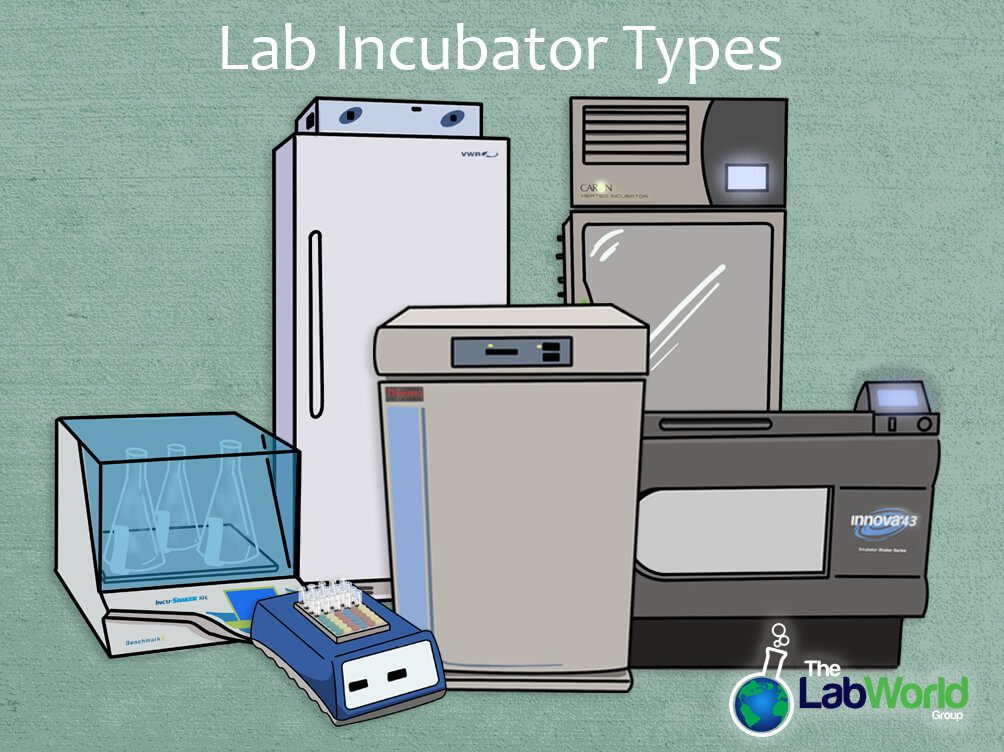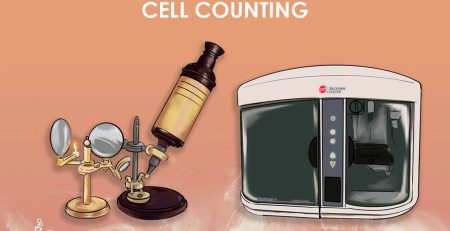
Types Of Laboratory Incubators
Amanda2022-03-30T16:29:09+00:00Over the years the field of incubator types has continued to expand and branch out to meet the needs of researchers as they continue to innovate. Since we’ve covered some of the structural components of microbiology incubators, as well as what sets them apart from laboratory ovens, now we’ll get into what sets lab incubators apart from each other.
General Lab Incubators
The workhorse of a lab is the steadfast and reliable general incubator. This basic heating lab instrument can range greatly in size. There are mini or personal incubators for small labs and small demands, as well as simple dry baths that surround a test tube or vessel with uniform heat. Stackable oven-sized incubators are common, but lab incubators can also reach up to a high capacity reach-in incubator built to house large batches of samples.
A general incubator will have over-temperature protection and simple control options, though some have more advanced features like programable start and stop times and decontamination routines. With a standard lab incubator, your biggest decision will be capacity and what’s right for your lab.
CO2 Incubators
A gas incubator allows users to control when and how much Carbon Dioxide, and sometimes Oxygen, is involved in the incubation process. These cell culture incubators help to mimic conditions inside the human body. By adding CO2 to the process, you’re controlling pH levels. Keeping cells from becoming either too alkaline or acidic and staying pH neutral encourages cell growth. CO2 incubators use monitors to measure and maintain accurate levels either with an infrared sensor or a thermal conductivity sensor.
In some cases, there is a need for Oxygen and Nitrogen control, this is when a tri gas incubator would be appropriate. These incubators These can either be used as a mixture of the three gases, CO2, O2, and N, or nitrogen can be employed to suppress ambient O2 to create conditions favorable to embryonic cells.
One pitfall of a tri gas incubator is the way it can affect Humidity. Nitrogen can drop an incubator’s humidity 50% of the set point so in choosing a tri gas incubator be sure to have a good idea of the recovery time after the gas is added.
Cooled incubators, Refrigerated Incubators, and BOD incubators
Generally, when we think of incubators we think of warmth. But a warm environment isn’t always what’s called for, so enters the refrigerated incubator. These options both heat and cool, with temperatures that can range from -50 up to 65°C. Such a wide range helps to cover an array of uses, including plant and insect studies, and bacteria research, curing, hematological testing, histochemical procedures, tissue culturing, enzyme digestion studies, crystallization studies, dry and staining procedures, shelf-life testing, water pollution testing, and Biochemical Oxygen Demand studies. Refrigerated incubators are usually cooled by two methods, either with a compressor or by Peltier technology.
Humidity Incubators and Test Chambers
A humidity chamber can be used to test the effects that a range of temperatures and humidity levels might have on a sample. These types of lab incubators are more about stressing a product or material to see what it will tolerate. Test chambers are particularly useful for telecommunication equipment and solar panels, and other components exposed to the elements daily. Humidity chambers and testing chambers are also useful in food science applications and quality assurance studies. A climate test chamber can range in size from a small benchtop model to a large capacity standing incubator, or even the size of a room to accommodate large objects or huge batches of a product.
Shaker incubators, Hybridization Incubators, and more
Sprinkled among the more commonly thought of incubators are the specialty Incubators that provide an additional form of agitation beyond just heat, gas, and humidity. These specialty incubators combine different elements to get more potent or consistent results.
Shaking incubators control the temperature and use either orbital or linear shaking, sometimes switching between both, to keep samples homogenous during a run. The shaking function also helps to keep nutrients evenly distributed, while the variable speed can impact cellular growth. Shaking incubators range in size, from a compact benchtop option all the way to floor models that are often stackable and even refrigerated.
A hybridization incubator can be similar to a shaking incubator while adding in rotation as a method of agitation. A rotisserie action keeps items in a gentle consistent motion to help ensure sample uniformity.
This dedicated incubator can be useful, however, if your bench space is limited the same effect can be achieved with an incubator compatible rotator or shaker. It’s important to check the equipment’s tolerances however before introducing instruments into an incubator as it can be potentially corrosive to mechanical components.
Light can also be used as an agitation method as is the case in plant growth chambers and insect growth chambers. These refrigerator-like incubators cover not only a broad range of programmable temperatures but also allow users to set light cycles in order to mimic night and day growth and rest times.
Final thoughts
As your research grows you may find that a general incubator while useful doesn’t quite fit the bill. Luckily these days there is a wide range of options out there, and there’s one that’s right for you and your team. At The Lab World Group, we get new inventory all the time, that includes incubators with variety. We offer General Incubators, BOD incubators, shaking incubators, and dry baths, and a broad range of water-jacketed and direct heat CO2 incubators.
All of our incubators are run through a rigorous inspection, repairs if necessary are made and every step is recorded and validated. If there is a particular offering you don’t see, reach out to us, we’re here to help.













